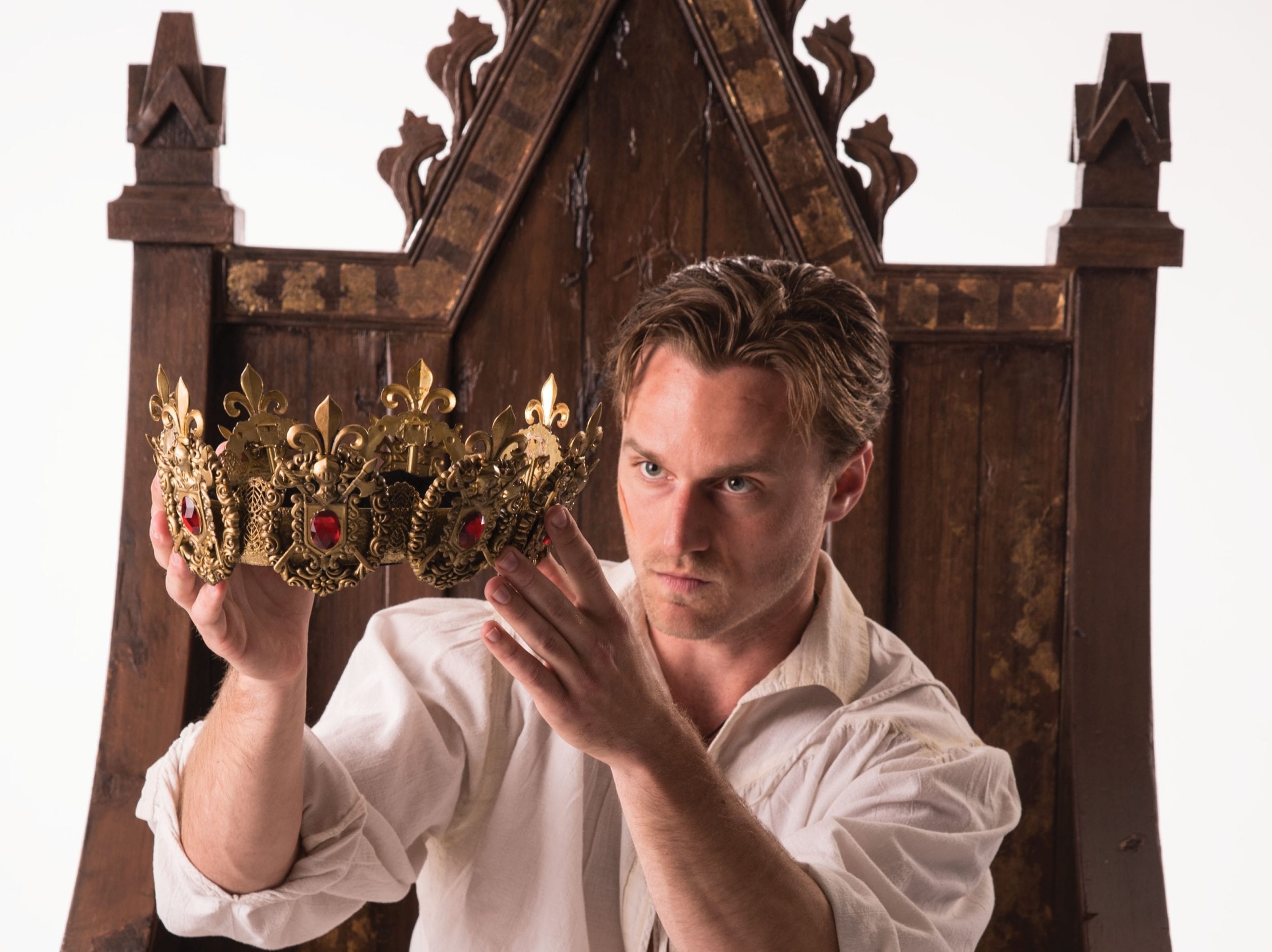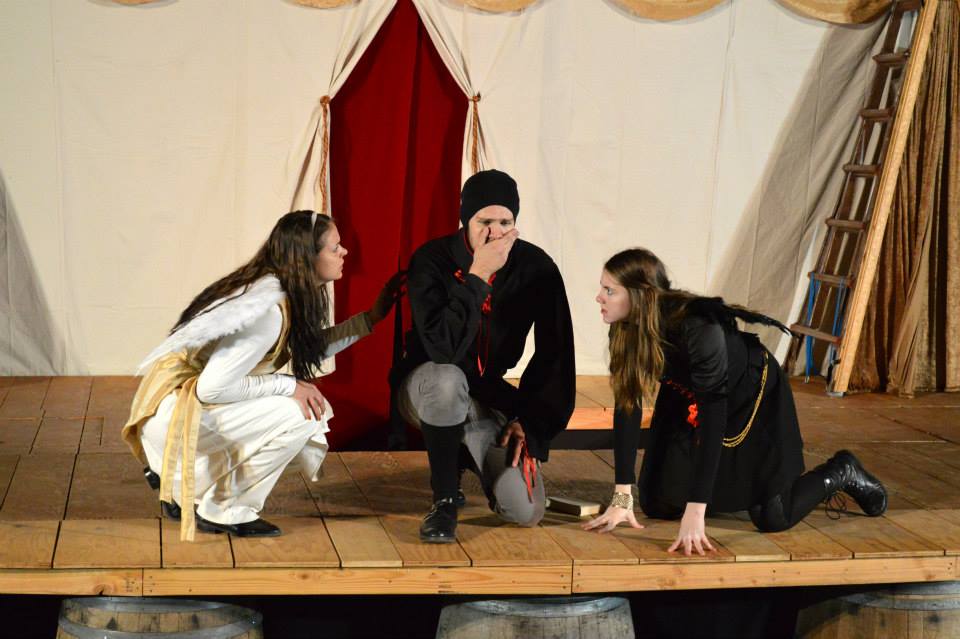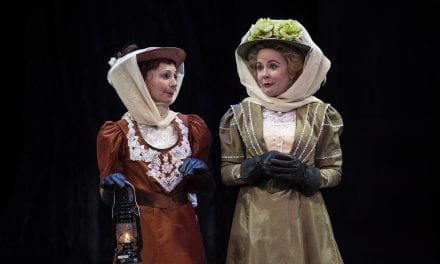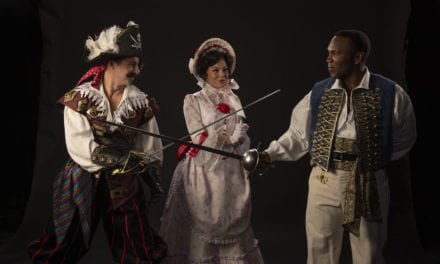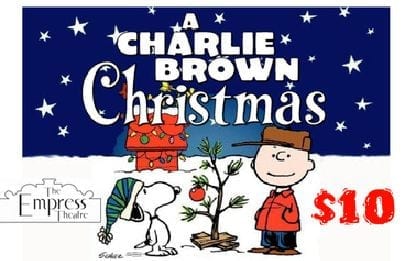CEDAR CITY — “Uneasy lies the head that wears the crown,” a dying Henry IV says as he ponders the stresses and strains that come with kingship. In addition to dealing with his own mortality, the dying king must grapple with the prospect of leaving his hard-won kingdom to his son (also named Henry), whose riotous living and irresponsibility have caused friction between the two in the past.

Sam Ashdown as Prince Henry in the Utah Shakespeare Festival’s 2015 production of King Henry IV Part Two. (Photo by Karl Hugh. Copyright Utah Shakespeare Festival 2015.) Show closes September 5, 2015.
In addition to traditional Shakespearean power struggles among kings and rebels, Henry IV, Part Two focuses on the person growth and maturity of Prince Henry (sometimes called Hal) as he changes from a shiftless do-nothing to a just king. As such, the play serves as an example of the kind of maturation in anyone who must adapt to more responsibility in their family or job. This growth is rewarding to see, especially for audience members who saw last year’s production of Henry IV, Part One, in which Prince Hal carouses with the legendary rapscallion Falstaff. The Utah Shakespeare Festival’s decision to cast the same actors as Prince Hal (Sam Ashdown) and Henry IV (Larry Bull) strengthened the continuity between plays and made Part Two a more satisfying evening than it would have been if presented as a stand-alone, self-contained play.
The most surprising aspect of this production was the emphasis that director Brian Vaughn placed on the dignity of every character. With Shakespeare’s emphasis on wealthy, powerful characters, he is sometimes accused of treating the poor with disdain. Yet, Vaughn created a production where even a prostitute (Doll Tearsheet, played by Saren Nofs-Snyder) and a poor army recruit (Mouldy, played by Andrew Voss) were human beings that could elicit sympathy (in Mouldy’s case) or respect (as Doll alludes to The Iliad and the Nine Worthies). Vaughn also drew attention parallels between this play and last year’s Part One (which he also directed). For example, last year Prince Hal’s first entrance was through a trapdoor, shirtless, and in the embrace of a woman. This year he entered for his first scene through the same trapdoor, again shirtless, and this time caring for a wound he had received in battle as he worries about his father’s health. The similarities between the two scenes served to highlight their fundamental difference: that the pleasure loving prince was now fully concerned with the duties and responsibilities in front of him.

Sam Ashdown (left) as Prince Henry and Larry Bull as King Henry IV in the Utah Shakespeare Festival’s 2015 production of King Henry IV Part Two. (Photo by Karl Hugh. Copyright Utah Shakespeare Festival 2015.)
In the role of Prince Henry, Ashdown was a compelling prince trying to grow into the role of a king. His commanding voice and regal bearing were ideally suited for the role, and these traits have laid an excellent foundation for next year’s Henry V in which Henry must lead an army to victory at the Battle of Agincourt. Ashdown also exploited the poignant side of his character, especially in the famous scene where Henry believes his father is dead. In that moment, he believes that the crown has been passed down to him, but he also realizes that all of the cares and worries that accompany it are also his. The mixed feelings that Ashdown shows in Henry about losing his father, gaining power, and running a kingdom make the character one of the most real in the Shakespearean canon.

Sceri Sioux Ivers (left) as Falstaff’s Page and John Ahlin as Sir John Falstaff in the Utah Shakespeare Festival’s 2015 production of King Henry IV Part Two. (Photo by Karl Hugh. Copyright Utah Shakespeare Festival 2015.)
Continuing his role as Henry IV, Bull spends most of his time sickly and stressed. Bull prevents this from being a one-note portrayal, though, as he emphasizes the concern that Henry IV has for bringing peace to his subjects. Bull also has a few small lovely paternal moments with King Henry’s other three sons, and his concern and trust he has in them makes this seem like an actual family.
As Falstaff, John Ahlin is a lovable rascal who tries to use his friendship with Prince Hal to enjoy a hedonistic lifestyle with minimal effort on his part. Ahlin, like Vaughn, understood that the dignity of Falstaff matters. Without it, Falstaff is a con artist or a deluded fool. But with an irrepressible grain of human dignity, Falstaff becomes a much more tragic character as he mourns his youth, vigor, and standing, all of which have passed away. Yet, Ahlin showed that Falstaff still clings to what remains: his title, his friends, and his drink. The result is a Falstaff that I wanted to see experience joy and pleasure and with whom I mourned as fate dealt him cruel blows.

Sam Ashdown as Prince Henry in the Utah Shakespeare Festival’s 2015 production of King Henry IV Part Two. (Photo by Karl Hugh. Copyright Utah Shakespeare Festival 2015.)
In addition to the superb acting from the three leading cast members, the play also benefited from David Kay Mickelsen‘s exquisite costume designs. The majestic tunics, manly battle gear, and detailed brocade were a visual joy, and I found myself bemoaning 21st century fashions, which are impoverished in comparison. No detail was too small for Mickelsen; consequentially, the costumes all felt suitable for a Hollywood film.
Despite all the positive things I have said, I admit that Henry IV, Part Two is one of the weaker plays in the series (which also includes Richard II). Shakespeare’s script lacks the structure and action of the other plays, and most of the plot development is character-based. The fourth act in particular moves slowly, and the token political conflict is not terribly interesting. But the connections that Vaughn, Ashdown, Bull, and others have made between the previous two installments of the series makes this a play worth seeing. Without this installment of the story, Henry would seem to jump from a problem child to a great military leader. The “in-between” is important in this great character’s development and makes the other, more famous plays in the series make more sense. Anyone who enjoys great psychological theatre or some of Shakespeare’s greatest history plays would appreciate this production of Henry IV, Part Two.

